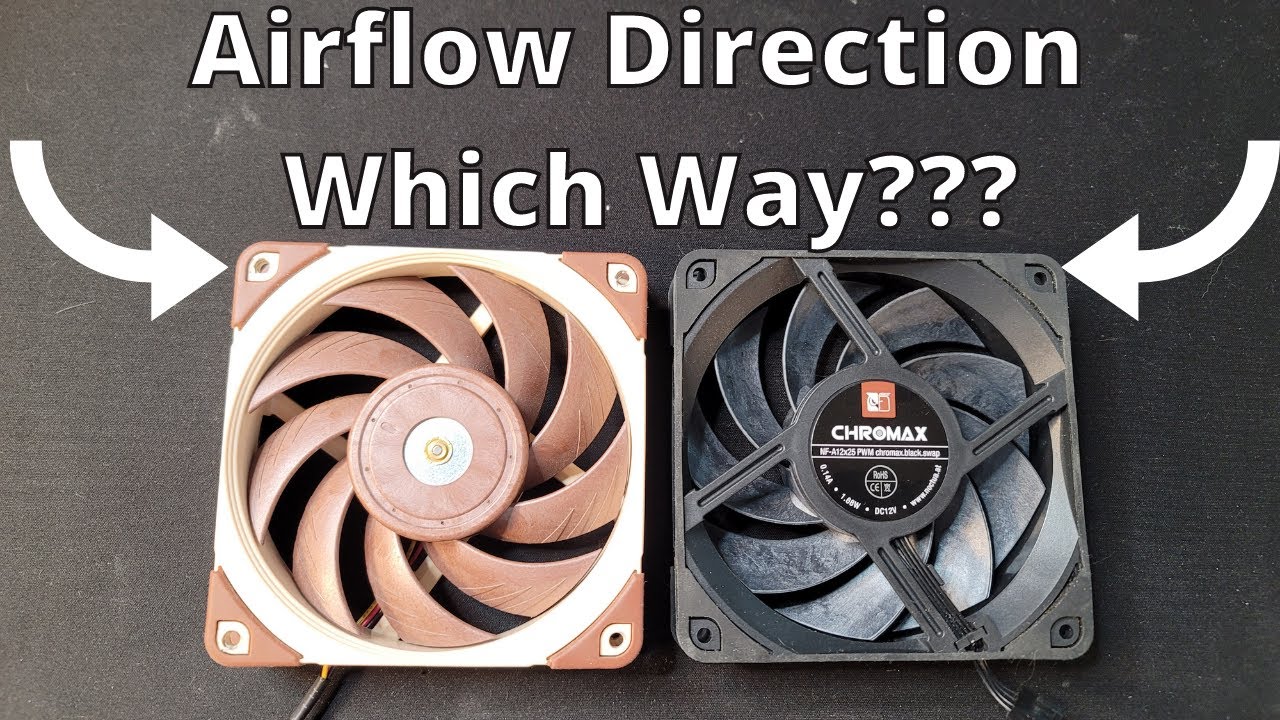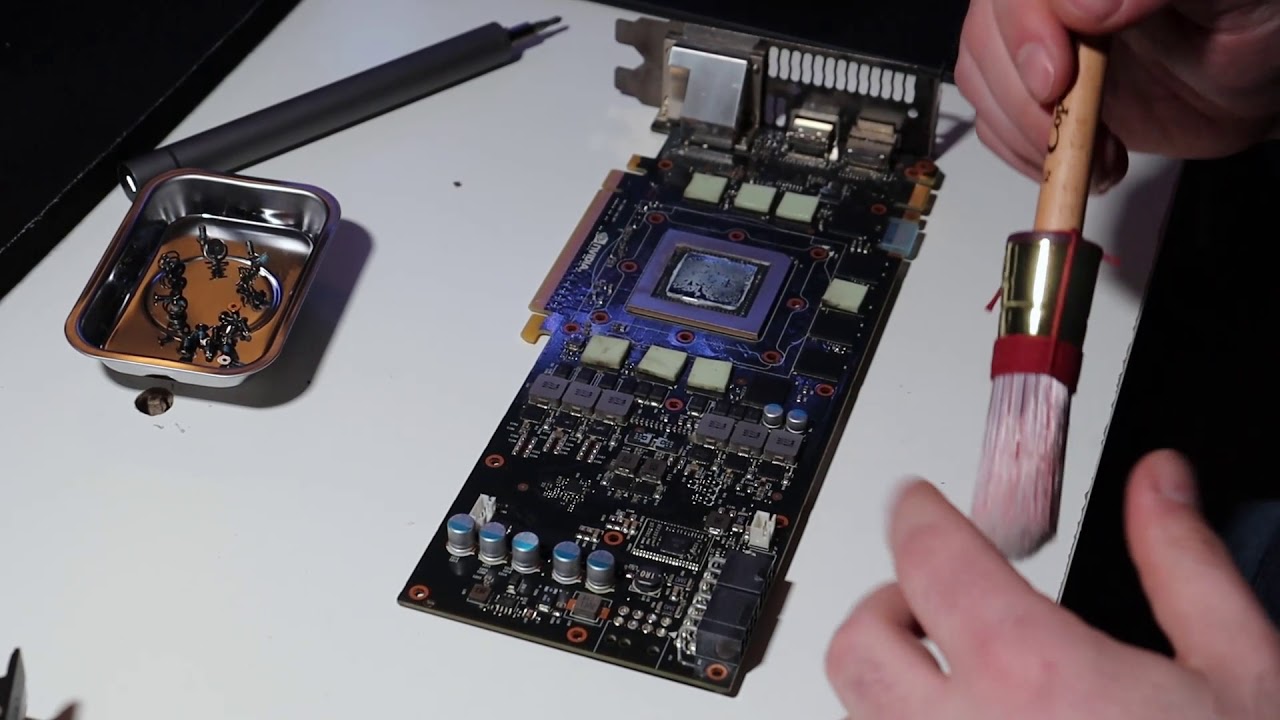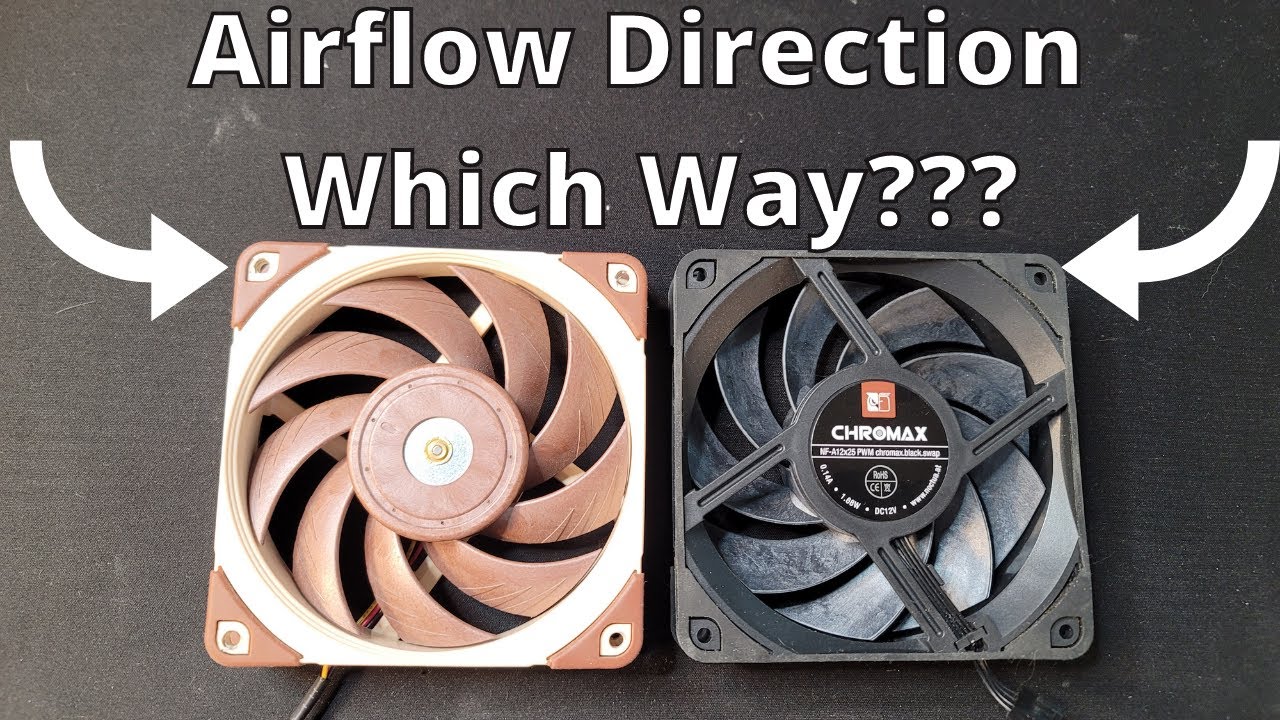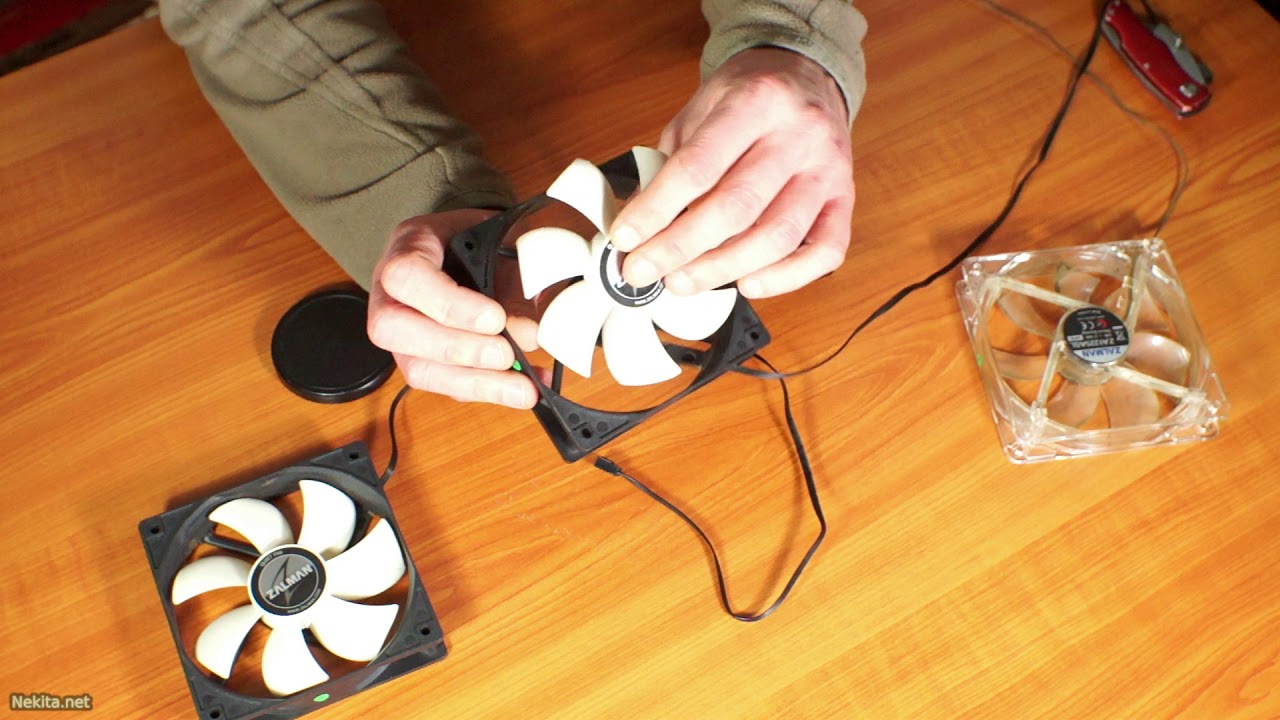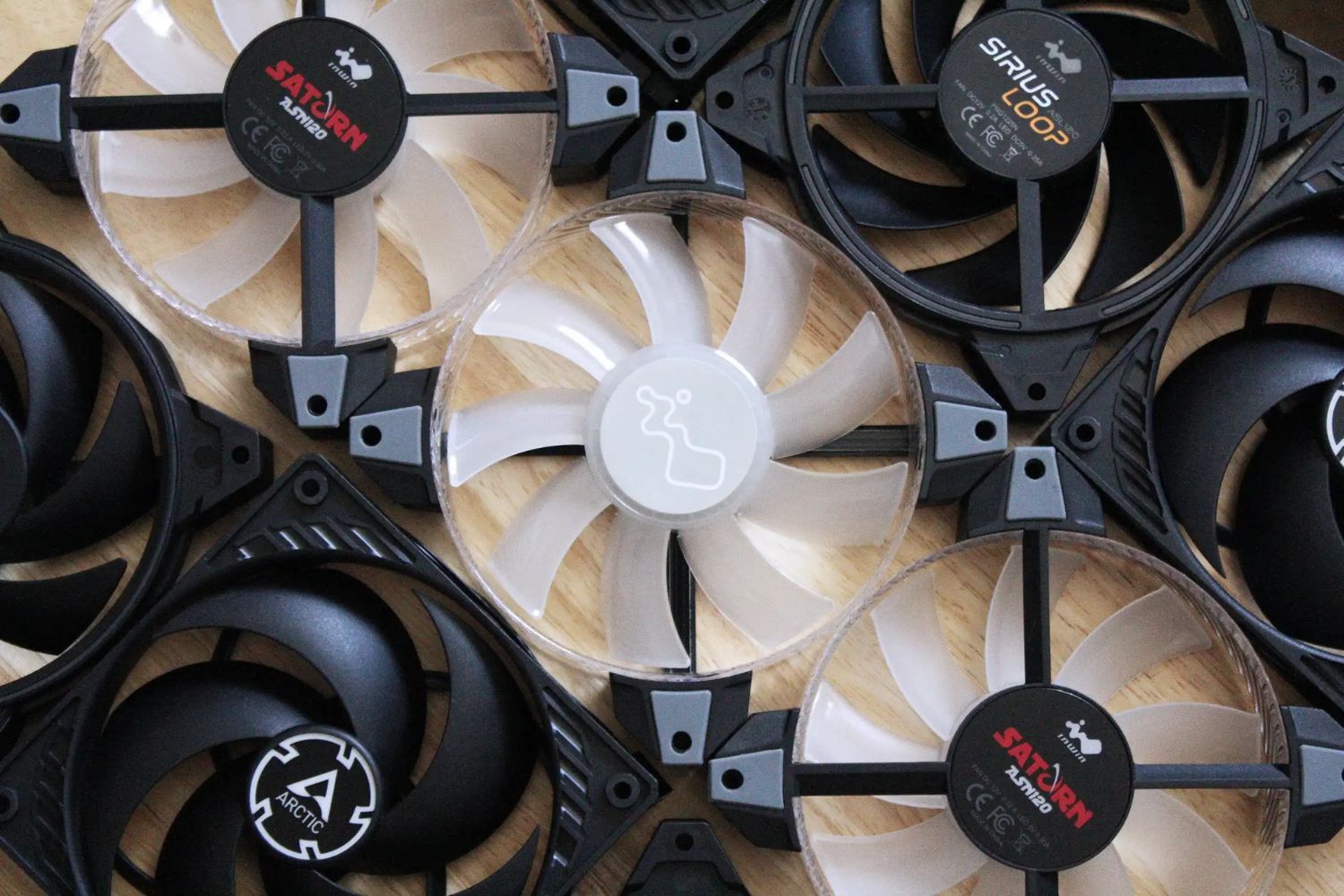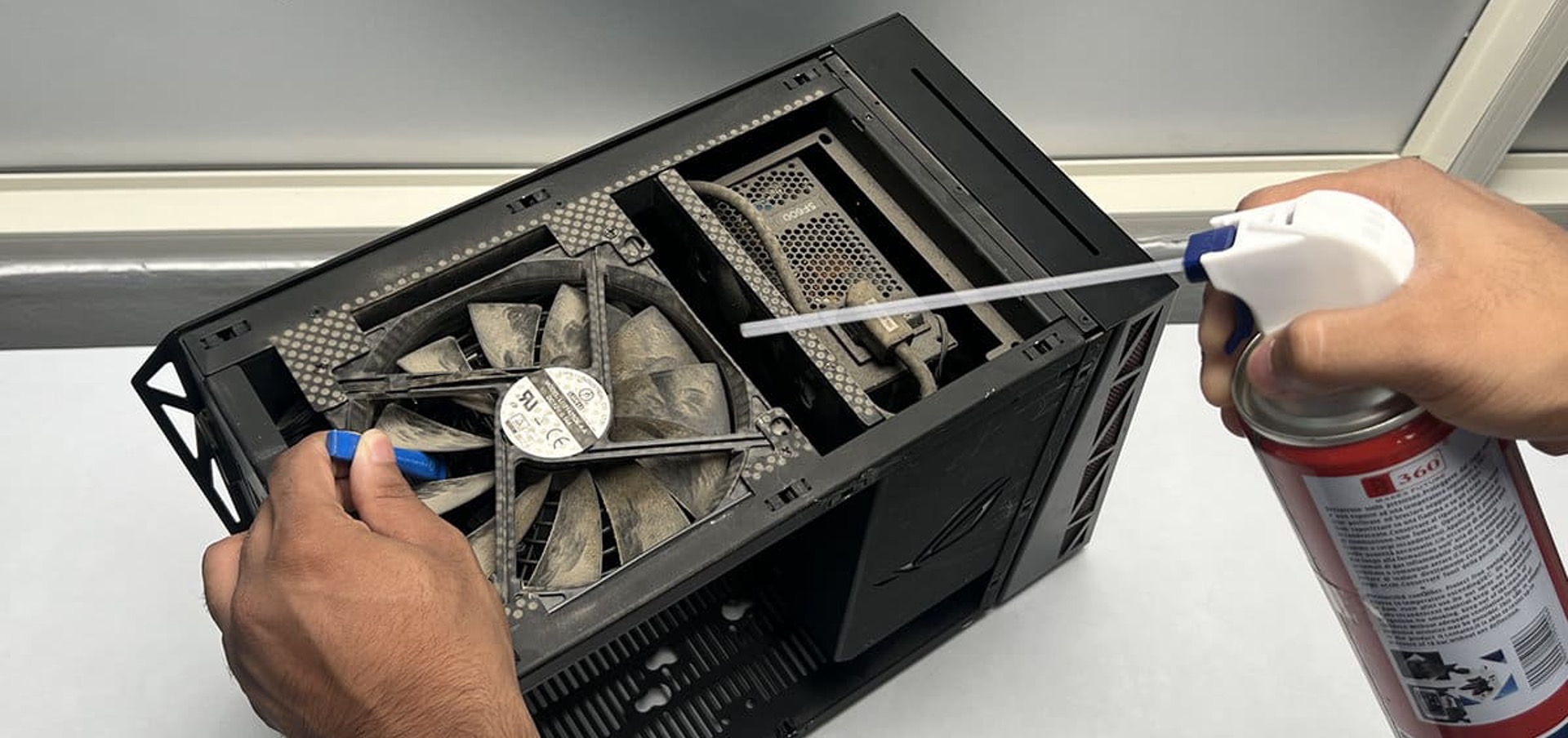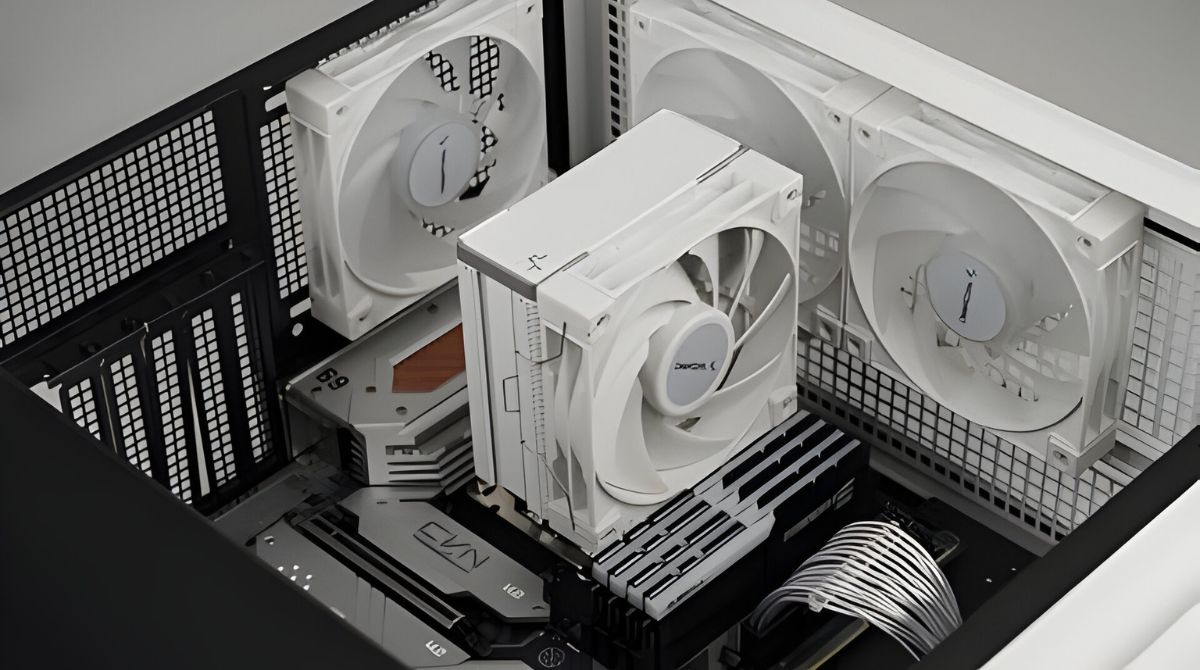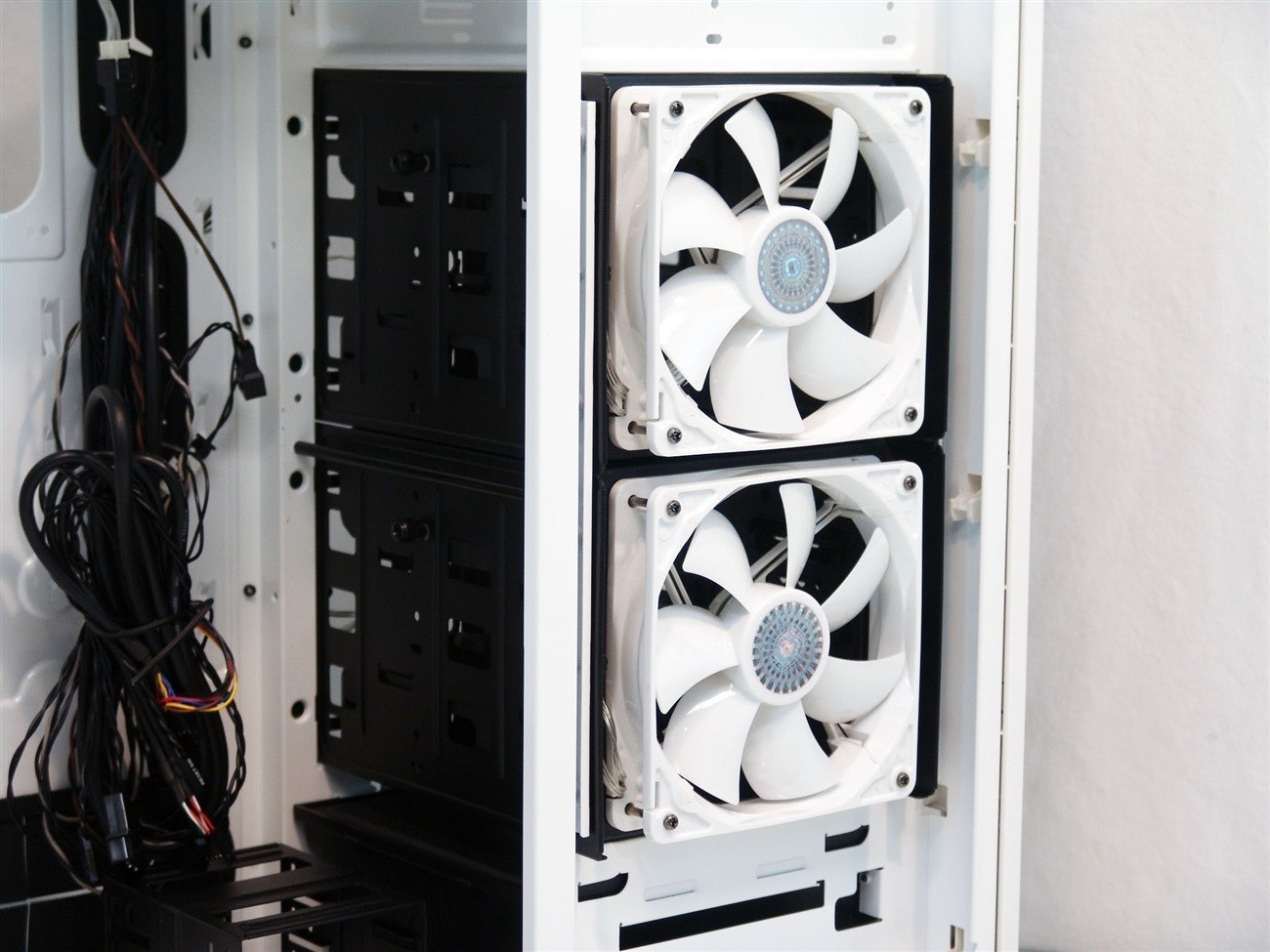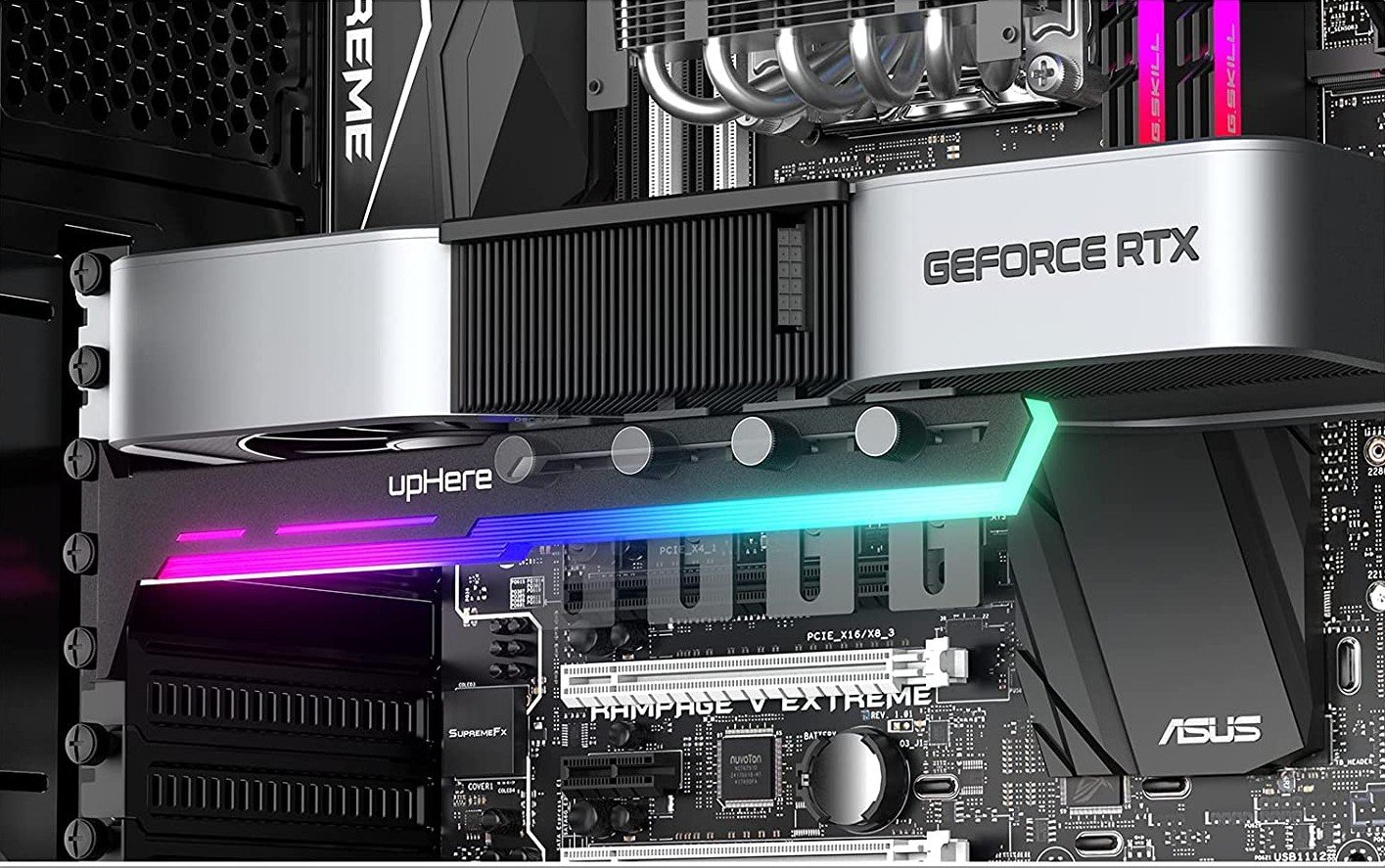Introduction
Welcome to the world of case fans, where the direction of airflow can make all the difference in optimizing your computer’s performance and keeping it cool. Whether you are a seasoned PC builder or a curious enthusiast, understanding the importance of case fans and knowing which way they should blow is crucial.
A case fan acts as a lifeline for your computer, regulating the temperature and maintaining proper airflow inside the case. By effectively dissipating heat, case fans prevent components from overheating and ensure their longevity. Without proper airflow, excessive heat can lead to decreased system performance, stability issues, and even hardware failures.
There are various types of case fans, each with its own specifications and purposes. Commonly, case fans are either intake or exhaust fans. Intake fans draw fresh air into the case, while exhaust fans expel hot air out of the case. By strategically placing these fans, you can create a balanced airflow that optimizes cooling efficiency.
Understanding the basics of airflow and ventilation is key to determining the optimal direction for your case fans. Ideally, cool air should enter the case from the front or bottom, while hot air should exit from the rear or top. This allows for a continuous flow of cool air over hot components, effectively dissipating heat.
In this article, we will delve into the various factors you need to consider when deciding the direction of your case fans. We will explore different fan configurations, debunk common misconceptions, and provide tips on how to optimize airflow in your case. By the end, you will have a comprehensive understanding of how to strategically position your case fans to maximize cooling efficiency and keep your system running smoothly.
What is a case fan?
A case fan, also known as a computer fan or cooling fan, is an essential component in any computer system. It is designed to circulate air within the computer case, expel hot air, and maintain optimal operating temperatures for the internal components.
The primary function of a case fan is to dissipate heat generated by the various components of a computer, such as the CPU, GPU, and power supply. These components produce heat as they perform complex operations, and without adequate cooling, they can overheat, resulting in reduced performance and potential damage to the hardware.
Case fans are commonly available in different sizes, typically ranging from 80mm to 200mm in diameter. They consist of blades or impellers, which rotate when powered, creating airflow and directing it towards specific areas in the computer case.
There are two main types of case fans: intake fans and exhaust fans. Intake fans are positioned to draw cool air from outside the case into the computer, while exhaust fans expel hot air from inside the case to the outside environment. These two types work together to ensure a continuous flow of air, promoting efficient cooling.
In addition to standard case fans, there are also specialized fans available for specific purposes. For example, CPU fans are designed to cool the processor, graphics card fans specifically target the GPU, and power supply fans ensure proper ventilation in the power supply unit.
Modern case fans come with various features to enhance their performance and minimize noise levels. Some fans have adjustable speed controls, allowing users to fine-tune the airflow and noise levels according to their requirements. Additionally, many fans are equipped with advanced bearing technologies, such as ball bearings or fluid dynamic bearings, which reduce friction and noise.
Overall, a case fan is a critical component in maintaining the longevity and performance of your computer. By dissipating heat and providing proper airflow, it ensures that your internal components stay within safe operating temperatures, allowing for smooth and reliable computing.
The Importance of Case Fans
When it comes to the overall performance and longevity of your computer, case fans play a vital role. Proper cooling and airflow are essential to ensure that your internal components stay within their optimal operating temperatures. Here are a few key reasons why case fans are of utmost importance:
Preventing Overheating: The primary function of case fans is to dissipate heat. As you use your computer, various components, such as the CPU and GPU, generate heat. Without adequate cooling, this heat can build up, leading to overheating. When a component reaches its thermal limits, it can cause stability issues, performance degradation, and even permanent damage to the hardware.
Preserving Component Lifespan: Excessive heat is one of the major contributors to premature component failure. When components operate within their recommended temperature ranges, their lifespan is extended. Case fans help in this regard by continuously supplying cool air and expelling hot air, ensuring that your CPU, GPU, and other sensitive hardware remain within their safe operating temperatures.
Improving System Performance: When your computer operates at higher temperatures, thermal throttling may occur. This is a built-in mechanism that reduces the performance of components to prevent overheating. By keeping your components cool with case fans, you can avoid thermal throttling and maintain peak performance for tasks that require heavy processing power, such as gaming or video editing.
Enhancing Stability: Overheating can lead to system instability, causing crashes, freezes, and unexpected shutdowns. By incorporating case fans into your system, you can maintain a stable operating environment and minimize the risk of encountering these frustrating issues.
Ensuring Proper Airflow: Case fans not only expel hot air but also help to introduce fresh, cool air into the system. This continuous circulation of air prevents stagnant pockets of heat from developing within the case. Proper airflow also aids in the removal of dust and debris, reducing the potential for clogged air vents and heat sink fins.
Reducing Noise: While case fans themselves produce some noise when operating, they help in reducing overall system noise. By effectively dissipating heat and preventing components from overheating, case fans minimize the need for fans to run at full speed, thereby reducing noise levels.
In summary, case fans are essential components for maintaining proper cooling and airflow in your computer system. By preventing overheating, preserving component lifespan, improving performance and stability, ensuring proper airflow, and reducing noise levels, they contribute significantly to the overall health and longevity of your computer.
Types of Case Fans
There are several types of case fans available on the market, each with its own characteristics and purposes. Understanding the different types can help you choose the most suitable option for your specific needs. Here are some common types of case fans:
1. Standard Case Fans: These are the most common type of case fans and come in various sizes, ranging from 80mm to 200mm in diameter. Standard case fans are designed for general-purpose cooling and can be used as either intake or exhaust fans.
2. Silent Case Fans: If you prioritize quiet operation, silent case fans are an excellent choice. These fans are designed with noise reduction in mind, employing features such as low-noise bearings, optimized blade design, and rubberized mounting points to minimize vibration and noise levels.
3. High-Airflow Case Fans: As the name suggests, high-airflow case fans are designed to maximize the volume of air moved while maintaining a balance between airflow and noise levels. These fans are ideal for systems that require improved cooling, such as high-performance gaming rigs or workstations.
4. LED Case Fans: LED case fans are popular among PC enthusiasts who want to add a touch of style to their system. These fans come with built-in LED lights, which provide visual appeal and can be customized to match the overall aesthetics of your computer setup.
5. RGB Case Fans: Similar to LED fans, RGB case fans offer customizable lighting options, allowing you to select from a wide range of colors and lighting effects. These fans often come with software control or remote control to easily customize the lighting to your preference.
6. PWM (Pulse Width Modulation) Fans: PWM fans offer flexible control over fan speed, allowing for precise adjustments based on the temperature of your components. These fans are often used in combination with fan controllers or motherboard headers that support PWM control, providing a fine-tuned cooling solution.
7. Water Cooling Fans: For systems utilizing water cooling solutions, specific fans designed for radiator cooling are available. These fans typically have high static pressure and are optimized for pushing or pulling air through the radiator fins, ensuring efficient heat dissipation.
8. Slim Fans: Slim case fans are designed for systems with restricted space or slim form factors. These fans are typically thinner than standard ones and provide decent airflow while maintaining a compact profile.
These are just a few examples of the different types of case fans available. It’s important to consider factors such as size, airflow, noise levels, and compatibility with your system when selecting the right case fan for your specific needs.
Airflow and Ventilation Basics
Airflow and ventilation are crucial aspects when it comes to maintaining optimal cooling in your computer case. Understanding the basics of how air moves through your case can help you make informed decisions about fan placement and optimize airflow. Let’s explore some fundamental concepts:
1. Airflow Direction: Air should move in a systematic and organized manner through your case. The general principle is to have cool air being pulled in from the front or bottom of the case and hot air being expelled out from the rear or top. This configuration ensures that cool air passes over hot components, effectively dissipating heat.
2. Positive and Negative Air Pressure: Computer cases can be set up to either have positive or negative air pressure. Positive air pressure occurs when intake fans bring in more air than the exhaust fans can expel. This helps to keep dust out of the case as the excess air escapes through any small gaps or vents. Negative air pressure, on the other hand, happens when the exhaust fans expel more air than the intake fans bring in. This can lead to air being drawn in through unfiltered openings, causing more dust to accumulate inside the case.
3. Importance of Fan Placement: Proper fan placement is crucial for effective airflow and ventilation. Intake fans are typically placed at the front or bottom of the case, where they can draw in cool air from the outside. Exhaust fans are usually placed at the rear or top of the case to expel hot air. By strategically positioning your fans, you can create a balanced airflow that maximizes cooling efficiency.
4. Clearance and Obstructions: It’s important to ensure that there is sufficient clearance inside your case for the airflow to move freely. Components such as cables, storage drives, or oversized CPU coolers can obstruct the airflow and impede cooling performance. Proper cable management and choosing components that allow for adequate clearance can help maintain optimal airflow.
5. Ventilation Openings and Dust Filters: Many computer cases come with ventilation openings or mesh panels that facilitate the intake and exhaust of air. It’s essential to ensure that these openings are free from obstructions and dust. Dust filters are often provided to prevent dust from entering the case through intake fans. Regular cleaning and maintenance of dust filters help in maintaining unobstructed airflow and preventing dust buildup inside the case.
6. Heat Sink and Fan Configurations: Some components, such as CPUs and graphic cards, come with their own heat sinks and fans. These fans play a crucial role in cooling these specific components. It’s important to ensure that the airflow from case fans does not disrupt the cooling effectiveness of these components. Proper coordination and alignment of fan placement and heat sink configurations can help achieve optimal cooling performance.
By understanding these airflow and ventilation basics, you can make informed decisions when it comes to optimizing the cooling efficiency of your computer case. Proper fan placement, clearance, and ventilation ensure that your components operate within safe temperatures, leading to enhanced stability, performance, and longevity of your system.
Which Way Should a Case Fan Blow?
One of the common questions when installing case fans is determining the direction in which they should blow. The ideal direction depends on the specific fan’s placement and its intended purpose within the overall airflow configuration. Let’s explore the general guidelines:
1. Intake Fans: Intake fans are positioned to bring fresh air into the case. They are typically placed at the front or bottom of the case. The general rule is for intake fans to blow air towards the inside of the case, pushing cool air in. This setup ensures that the components receive a constant supply of fresh cool air.
2. Exhaust Fans: Exhaust fans are responsible for expelling hot air from the case. They are usually located at the rear or top of the case. The preferred direction for exhaust fans is to blow air out of the case, pushing hot air away from the internal components and expelling it to the outside environment.
3. Side Panel Fans: Some cases come with side panel fans or offer the option to mount them. The direction of side panel fans depends on their placement and the desired airflow. If the side panel fan aligns with a component that generates a lot of heat, such as a graphics card, it is typically set to blow air directly onto that component to aid in its cooling. Otherwise, side panel fans can be set as intake or exhaust, depending on the overall airflow configuration.
4. Radiator Fans: In the case of liquid cooling systems with radiators, the direction of the radiator fans depends on whether they are serving as intake or exhaust. If the radiator is positioned at the front or bottom of the case as an intake, the fans on the radiator should blow air into the case. Conversely, if the radiator is mounted at the rear or top of the case as an exhaust, the fans should blow air out of the case.
5. Multiple Fan Configurations: In cases with multiple fans, it is essential to consider the coordination between intake and exhaust fans. The general principle is to create a balanced airflow that promotes a smooth flow of cool air over hot components. It is advisable to have more intake fans than exhaust fans to maintain positive air pressure within the case, minimizing the ingress of dust through unfiltered openings.
Ultimately, the direction in which a case fan blows depends on its placement and the overall airflow strategy of your computer case. It is crucial to ensure that the orientation of the fans aligns with their intended purpose, be it intake or exhaust, to optimize cooling effectiveness and maintain proper airflow throughout the system.
Factors to Consider When Choosing Fan Placement
When it comes to choosing the placement of your case fans, several factors should be taken into consideration to ensure optimal cooling performance. Here are some key factors to keep in mind:
1. Component Heat Generation: Different components within your computer generate varying amounts of heat. Identify the components that tend to run hotter, such as the CPU or graphics card, and prioritize their cooling. Place fans strategically to ensure these components receive adequate airflow and are kept within their recommended temperature ranges.
2. Available Fan Mounting Points: Assess your computer case for available fan mounting points. Depending on the case design, there may be specific locations where fans can be installed, such as the front, rear, top, or side panels. Take note of these mounting points and plan your fan placement accordingly.
3. Airflow Direction and Channeling: Consider the desired direction of airflow in your case. As mentioned earlier, intake fans should draw cool air in, while exhaust fans should expel hot air out. Plan your fan placement to facilitate a smooth and organized airflow pattern that promotes efficient cooling.
4. Balance between Intake and Exhaust: Striking a balance between intake and exhaust fans is crucial. Aim to have more intake fans than exhaust fans to maintain positive air pressure inside the case. Positive pressure helps prevent dust buildup by pushing air out of small gaps and unfiltered openings.
5. Clearance and Obstacles: Ensure that there is sufficient clearance for your fans to operate optimally. Take into account the dimensions of your components, such as CPU coolers or tall RAM modules, and factor in the space required for proper airflow. Eliminate potential obstacles that could obstruct the path of the fans, such as cables or storage drives.
6. Compatibility with Air Filters and Dust Management: Many cases come with dust filters that attach to intake fan mountings. Consider how your fan placement will align with these dust filters. Ensure that your chosen fans can accommodate these filters or that you have alternative plans for dust management to prevent dust buildup inside your case.
7. Noise Levels: Fan placement can also impact noise levels. Fans positioned near sensitive components, such as the CPU or graphics card, may produce more noise due to higher RPMs. Consider the noise levels of your fans and their proximity to critical components to strike a balance between cooling effectiveness and noise reduction.
8. Future Expansion: Anticipate any future component upgrades or expansions and plan your fan placement accordingly. Leave room for additional fans or consider adjustability in your fan placements to accommodate potential changes or modifications to your system.
By considering these factors when choosing fan placement, you can optimize the cooling efficiency of your computer case, maintain low temperatures for your components, and ensure the longevity and performance of your system.
Different Fan Configurations and Their Pros and Cons
When it comes to fan configurations, there are various options to consider, each with its own advantages and drawbacks. The configuration you choose will depend on factors such as case size, component layout, and desired cooling performance. Let’s explore some popular fan configurations:
1. Single Exhaust Fan: This configuration consists of a single exhaust fan located at the rear or top of the case. The exhaust fan expels hot air from the case, creating a negative pressure environment. Pros: Simple setup, effective for moderate heat loads. Cons: Limited airflow, may not be sufficient for high-performance systems.
2. Single Intake Fan: With this configuration, a single intake fan is positioned at the front or bottom of the case, drawing in cool air. This setup creates positive pressure inside the case. Pros: Provides fresh cool air, reduces dust accumulation. Cons: Limited airflow for heat dissipation, may result in hot air pockets forming within the case.
3. Dual Exhaust Fans: This configuration features two exhaust fans, typically positioned at the rear and top of the case. It improves the airflow and enhances heat expulsion. Pros: Better airflow and heat dissipation compared to a single exhaust fan setup. Cons: May create a negative pressure environment, potentially pulling in dust from unfiltered openings.
4. Dual Intake Fans: With dual intake fans at the front or bottom of the case, this configuration maximizes the influx of cool air into the case. It helps maintain positive pressure and provides improved airflow to components. Pros: Enhanced cooling performance, increased positive pressure. Cons: Potential noise increase, increased dust accumulation inside the case if not properly filtered.
5. Front Intake and Rear Exhaust: This configuration combines a front intake fan with a rear exhaust fan. The intake fan draws in cool air from the front, while the exhaust fan expels hot air at the rear. Pros: Efficient airflow, effective heat dissipation. Cons: Limited control over airflow distribution within the case.
6. Radiator Configuration (Top Mounted): This configuration involves mounting a radiator with fans at the top of the case, typically for liquid cooling. The fans pull cool air from outside the case through the radiator. Pros: Efficient cooling of the radiator, helps dissipate heat. Cons: May require additional exhaust fans to remove hot air properly.
7. Push-Pull Configuration: In a push-pull configuration, two fans are positioned on either side of a heat sink or radiator. One fan pushes air through the heat sink, while the other pulls air from the opposite side. Pros: Improved airflow and heat dissipation compared to a single fan setup. Cons: Requires additional fan slots, may increase noise levels.
It’s important to note that the effectiveness of each fan configuration will vary depending on factors such as case design, fan quality, component heat generation, and ambient temperatures. Experimentation and monitoring temperatures are key to finding the optimal fan configuration for your specific system.
Common Misconceptions about Fan Placement
When it comes to fan placement in computer cases, there are several misconceptions that can lead to suboptimal cooling and airflow. Understanding and dispelling these misconceptions can help you make informed decisions for better fan placement. Let’s address some common misconceptions:
1. More Fans Always Means Better Cooling: While having more fans can potentially improve cooling, it is not always the case. The effectiveness of cooling depends on various factors, such as fan speed, airflow direction, and overall configuration. It’s essential to strike a balance between intake and exhaust fans and ensure proper airflow management.
2. Placing Fans Randomly Increases Cooling Performance: Randomly placing fans without considering airflow direction and overall case design can actually disrupt proper airflow and cause turbulence. It’s important to plan fan placement strategically, ensuring a smooth and organized airflow pattern that promotes efficient cooling.
3. Powerful Fans Always Provide Better Cooling: While powerful fans can move more air, it doesn’t necessarily mean better cooling. Airflow direction, static pressure, and optimized fan placement are equally important factors. It’s essential to consider matching the fan specifications with the intended purpose and the specific needs of your system.
4. Placing Fans Closes to Components Automatically Cools Them Better: Placing fans extremely close to components may not always result in better cooling. The distance between the fan and the component, as well as the airflow pattern, must be considered. Improper fan placement can create hotspots or inefficient cooling due to disrupted airflow.
5. All Fans Should Blow in the Same Direction: In some cases, mixing fan directions can help achieve a more balanced airflow. For example, using one intake fan and one exhaust fan can create better airflow dynamics within the case. Don’t assume that all fans must blow in the same direction; it’s important to consider the overall airflow strategy.
6. Increasing Fan Speed Always Improves Cooling Performance: Increasing fan speed can indeed result in increased airflow and improved cooling performance. However, it also leads to higher noise levels. It’s crucial to find the right balance between cooling performance and noise levels based on your system’s requirements and your personal preferences.
7. Fans at Maximum RPM Provide the Best Cooling: Running fans at their maximum RPM may provide enhanced cooling, but it comes at the cost of increased noise levels. It’s important to find the optimal fan speed that provides the necessary cooling while keeping noise under control. Experimenting with fan speed and monitoring temperatures can help find the right balance.
By understanding and avoiding these common misconceptions, you can make more informed decisions when it comes to fan placement. Proper planning, consideration of airflow dynamics, and monitoring of temperatures will lead to better cooling performance and an efficiently cooled system.
Tips for Optimizing Airflow in Your Case
Optimizing airflow in your computer case is crucial for maintaining low temperatures and maximizing cooling performance. Here are some helpful tips to ensure proper airflow and enhance the overall cooling efficiency of your system:
1. Plan Your Fan Configuration: Consider the layout and size of your case, as well as the components you have installed. Plan the placement of intake and exhaust fans strategically to create a balanced airflow and promote efficient heat dissipation.
2. Use Intake Fans for Fresh Air: Position intake fans at the front or bottom of the case to draw in cool, fresh air from outside and direct it towards heat-generating components. This ensures that components receive a constant supply of cool air for optimal cooling performance.
3. Place Exhaust Fans for Hot Air Expulsion: Position exhaust fans at the rear or top of the case to expel hot air generated by components. This helps in creating a smooth flow of air, preventing hot air from being trapped inside the case and promoting effective heat dissipation.
4. Consider Positive Air Pressure: Aim for positive air pressure inside the case by having more intake fans than exhaust fans. Positive air pressure helps in reducing the entry of dust through unfiltered openings and provides better control over the airflow within the case.
5. Manage Cable Placement and Clearance: Ensure that your cables are properly managed and do not obstruct the airflow path. Use cable ties or routing channels to keep cables organized and away from fan blades or heat sinks, allowing for unobstructed airflow.
6. Remove Dust and Clean Regularly: Dust accumulation can hinder airflow and reduce cooling effectiveness. Regularly clean your case, fans, and filters to remove dust and maintain optimal airflow. Use compressed air or anti-static cleaning tools to safely remove dust without damaging internal components.
7. Consider Fan Placement for Component Cooling: In addition to general case fans, consider specific cooling solutions for components such as the CPU and GPU. Utilize CPU coolers, graphics card fans, or water cooling solutions to enhance cooling performance for these specific components.
8. Optimize Radiator Placement (For Liquid Cooling): If you are using a liquid cooling solution with a radiator, place the radiator and associated fans in a location that allows for efficient heat dissipation. Mounting the radiator at the front or top of the case with proper fan airflow direction can optimize cooling efficiency.
9. Monitor and Adjust Fan Speeds: Utilize software or hardware fan controllers to monitor and adjust fan speeds based on component temperatures. This allows for fine-tuning of cooling performance, optimizing fan speeds to match the specific cooling needs of your system.
10. Consider Additional Case Cooling Accessories: In some cases, additional cooling accessories such as fan filters, fan grills, or fan shrouds can help optimize airflow and enhance cooling performance. These accessories can help to direct airflow, reduce noise, or improve dust management.
By following these tips, you can optimize the airflow in your computer case, maintain low temperatures for your components, and ensure the longevity and performance of your system.
Conclusion
Proper fan placement and airflow optimization are essential for maintaining optimal cooling performance and temperature management in your computer case. By considering factors such as fan configurations, component heat generation, airflow direction, and clearance, you can create an efficient cooling system tailored to your specific needs.
Remember, it’s important to strike a balance between intake and exhaust fans to maintain positive air pressure within the case. Positive pressure helps prevent dust accumulation and ensures a continuous flow of fresh, cool air over heat-generating components.
Understanding common misconceptions about fan placement can also help debunk myths and prevent suboptimal cooling configurations. By avoiding these misconceptions, you can make informed decisions to achieve the most effective airflow and cooling performance for your system.
Don’t forget to regularly clean your case, fans, and filters to remove dust and maintain proper airflow. Dust accumulation can hinder cooling effectiveness and potentially cause components to overheat.
Additionally, monitoring temperatures and adjusting fan speeds can help fine-tune your cooling system for optimal performance. Utilize software or hardware fan controllers to ensure that your fans are operating at appropriate speeds based on your system’s cooling requirements.
Overall, optimizing airflow in your computer case is crucial for maintaining low component temperatures, enhancing stability, and extending the lifespan of your hardware. By implementing the tips and considerations outlined in this article, you can create a well-cooled and efficient system that performs at its best.







